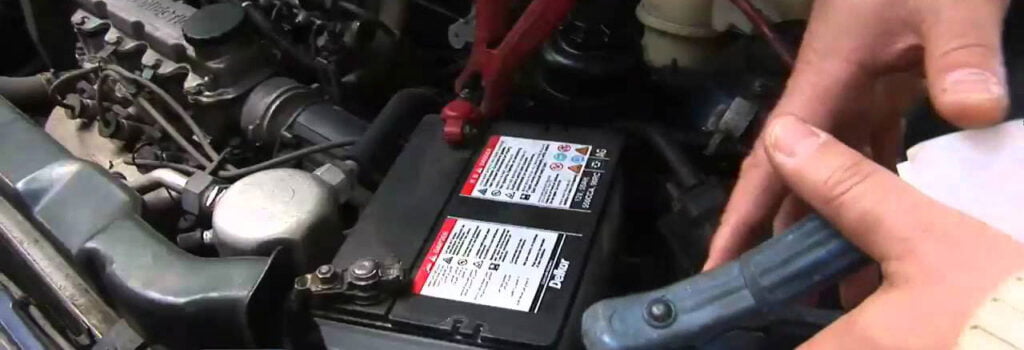Staying safe on the road starts with knowing when to replace your tires. Worn or damaged tires don’t just impact how your car drives—they can also increase stopping distance and risk of accidents. If you’re unsure when it’s time for a change, you’re not alone. From tread depth to tire age, this post will break down the key warning signs to help you make the right call and keep your car performing at its best.
The Importance of Tire Replacement
Your tires are the only part of your car that touches the road, and they play a critical role in safety and performance. From ensuring proper traction to supporting your car’s weight, tires are essential for keeping you and your passengers safe. Driving on worn or damaged tires isn’t just risky—it can create dangerous situations for everyone on the road.
Risks of Driving on Worn Tires
Worn tires don’t provide the same stability and control as new ones, making your vehicle harder to drive safely. Here’s why driving on excessively worn tires can be so hazardous:
- Reduced Traction: Tires with shallow or no tread struggle to grip the road, especially in rain, snow, or ice. This lack of grip increases the odds of skidding or losing control.
- Risk of Hydroplaning: Bald tires are particularly dangerous on wet roads. They can’t disperse water effectively, leading to hydroplaning, where your car “floats” on water and loses all traction.
- Longer Stopping Distances: Tread depth directly impacts your car’s ability to stop in time. Without enough tread, braking effectively in emergencies becomes nearly impossible.
- Higher Chance of Blowouts: Driving on overly worn or damaged tires significantly increases the risk of a blowout—a sudden and complete loss of air pressure. Blowouts often occur at high speeds and can lead to serious accidents.
Each of these risks puts not only you but other drivers and pedestrians in harm’s way. Think of worn tires like overused sneakers—they might feel okay at first, but over time, they stop performing as needed, leaving you vulnerable.
 Photo by Gustavo Fring
Photo by Gustavo Fring
How Worn Tires Impact Vehicle Performance
Driving isn’t just about getting from point A to point B; it’s about how well your car responds to different conditions. Old or worn tires compromise your vehicle in several key ways:
- Poor Handling: With less tread, cornering and turning feel less precise. This is especially noticeable when driving at higher speeds or when trying to avoid obstacles.
- Decreased Fuel Efficiency: Worn tires often increase rolling resistance, which means your engine has to work harder to maintain speed. This leads to lower gas mileage and higher fuel costs.
- Uneven Wear Patterns: Tires with uneven wear create vibrations and reduce overall stability while driving. This puts extra strain on suspension and steering components.
When your tires are in poor condition, every trip becomes less predictable. Whether it’s reduced braking force or uneven handling, your car’s performance directly correlates with tire quality.
Avoiding Preventable Costs
While buying new tires can feel expensive, not replacing worn tires ends up costing more in the long run. Here’s why:
- Avoiding Repairs After a Blowout: A tire blowout often causes damage to rims, fenders, or even suspension systems. These unexpected repairs can add up quickly.
- Extending Suspension Life: Damaged or uneven tires can hurt your car’s suspension, leading to earlier-than-necessary replacements.
- Preventing Legal Issues: Most states require tires to have a minimum tread depth, usually 2/32 of an inch. Driving on illegal tires can result in fines or penalties.
Think of it as investing in peace of mind. New tires protect not only your wallet but also your safety—a win-win situation you shouldn’t overlook.
Signs That Indicate It’s Time to Replace Your Tires
Tires aren’t something drivers usually think about regularly—but they play a huge role in your vehicle’s safety and handling. Even if they look fine at a glance, there are specific signs that could indicate it’s time for a replacement. Let’s examine these key indicators so you can address potential problems before they become serious.
Low Tread Depth
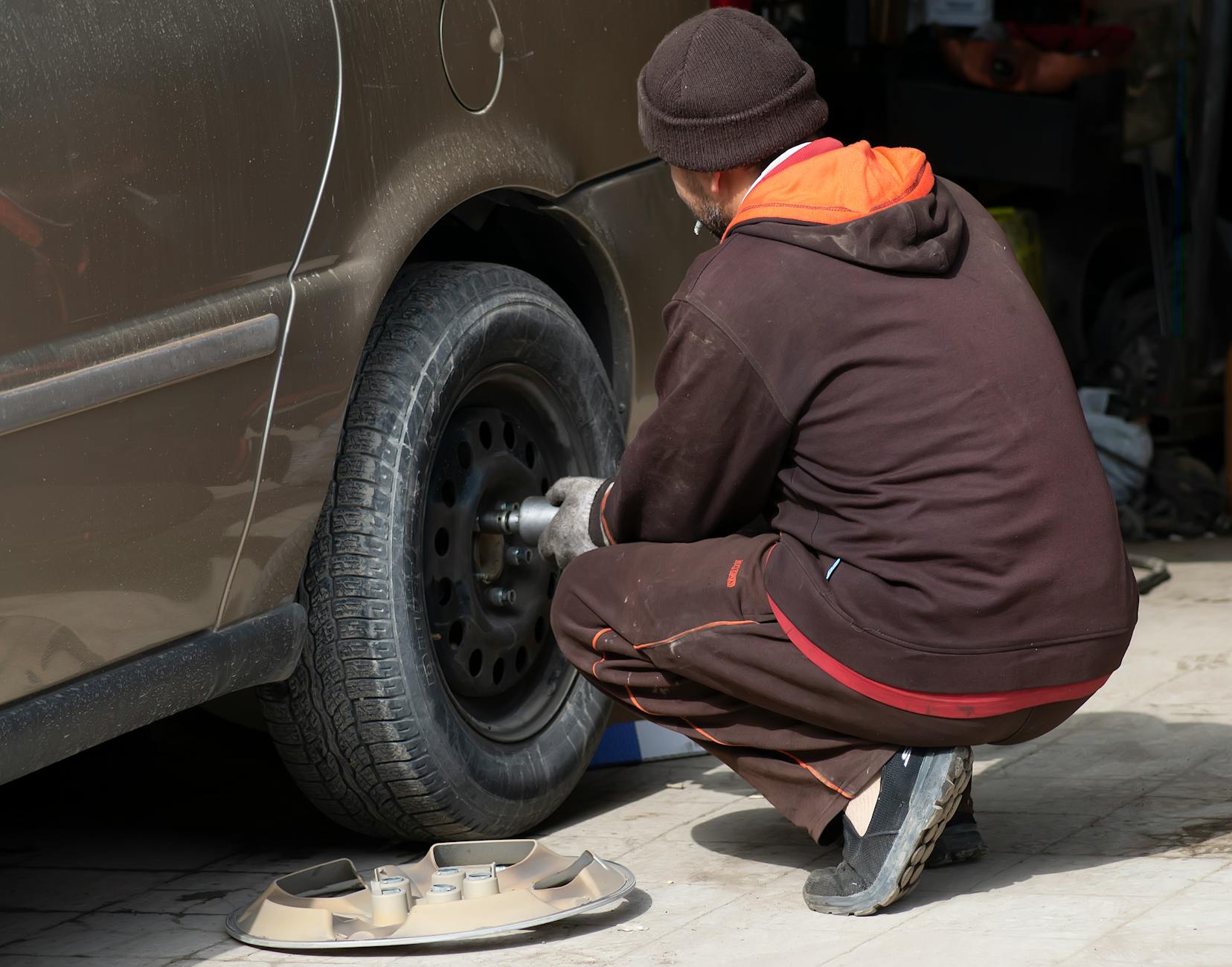 Photo by Frans van Heerden
Photo by Frans van Heerden
Tire tread depth is one of the easiest ways to tell if your tires need replacing. The tread grips the road, so when it wears down too much, your car loses traction. Most new tires start with 10/32″ or 11/32″ of tread depth. Once that drops below 2/32″, it’s time to replace the tire—that’s also the legal minimum in most states.
How can you measure tread depth? The classic “penny test” is a quick option. Place a penny into a tread groove with Lincoln’s head upside down and facing you. If you can see the top of his head, your tires are below 2/32″ and it’s time for a change. Alternatively, many tires come with treadwear indicators—small raised bars that appear across the grooves when the tread is too low.
If you frequently drive in wet or snowy conditions, experts suggest replacing your tires even sooner, at around 4/32” tread depth, to maintain safer traction.
Uneven Tread Wear
Uneven wear on your tires could mean trouble beyond the tires themselves. Factors like improper alignment, unbalanced wheels, or even suspension issues can cause certain areas of the tire to wear faster than others. But why is this dangerous? Uneven tread reduces the tire’s ability to maintain proper contact with the road, increasing your risk of losing control in tricky driving conditions.
You might see one side of the tire looking worn while the other looks fine, or notice a patchy or scalloped pattern. Left unchecked, this can lead to vibrations, poor handling, and even faster wear on your other tires. If you spot uneven wear, inspect your alignment and suspension system along with replacing the damaged tire.
Cracks, Bulges, and Sidewall Damage
When inspecting your tires, pay attention to the sidewalls. Any visible cracks, bulges, or cuts are serious red flags. Cracks might develop with age as the rubber dries out, while bulges indicate the tire’s inner structure is compromised. Both conditions create a high risk of blowouts, especially at highway speeds.
Think of these as your tire’s version of a warning light. A bulge could mean air is leaking from the inner layers, while cracks make the rubber weaker and more brittle over time. A quick visual check every now and then can save you from getting stranded—or worse.
Age of the Tire
Even if your tires look fine and have adequate tread depth, they may still need replacement based on age. Most tire manufacturers recommend replacing tires after 5-6 years, regardless of their condition. Tires naturally degrade over time, and old rubber doesn’t perform as reliably, especially in wet or icy conditions.
How do you check your tire’s age? Look for the DOT code on the tire’s sidewall. The last four digits indicate the week and year the tire was manufactured (e.g., “2419” means it was made in the 24th week of 2019). If your tires are over six years old, consider replacing them for your safety—even if they seem okay.
Frequent Vibration or Thumping While Driving
Feeling vibrations or thumping sensations while driving isn’t normal—and your tires can be a key culprit. This could mean the tires are unevenly worn, damaged, or even out of balance. Vibrations can also signal misalignment or suspension issues that impact your tires over time.
Ignoring these sensations can worsen the problem, potentially leading to a blowout or causing wear on your suspension and steering components. If this happens often, get your tires and alignment professionally inspected to see if replacements are needed.
By keeping an eye on these warning signs, you’ll know when it’s time to replace your tires before safety becomes a concern. Your tires are your car’s first line of defense—don’t let worn or damaged ones put you at risk.
How to Check Your Tires at Home
Keeping your tires in good condition is essential for safety on the road, and the good news is that you don’t always need a professional to identify potential issues. With a few simple tools and a bit of know-how, you can check your tires at home and get a clear idea of whether they need attention or replacement.
Using the Penny Test
The penny test is a quick and easy way to check your tire tread depth and determine if your tires are still safe for driving. Here’s how to do it:
- Grab a standard penny and hold it so that Lincoln’s head is upside down.
- Insert the penny into the tire tread groove, choosing a spot where the tread appears shallowest.
- Look closely at Lincoln’s head. If the top of his head is visible, your tread depth is less than 2/32 of an inch, and it’s time for new tires.
For wet or snowy conditions, consider replacing tires earlier, at around 4/32 of an inch, to maintain better traction. While not as precise as a tread-depth gauge, the penny test is a reliable visual tool that’s always within reach.
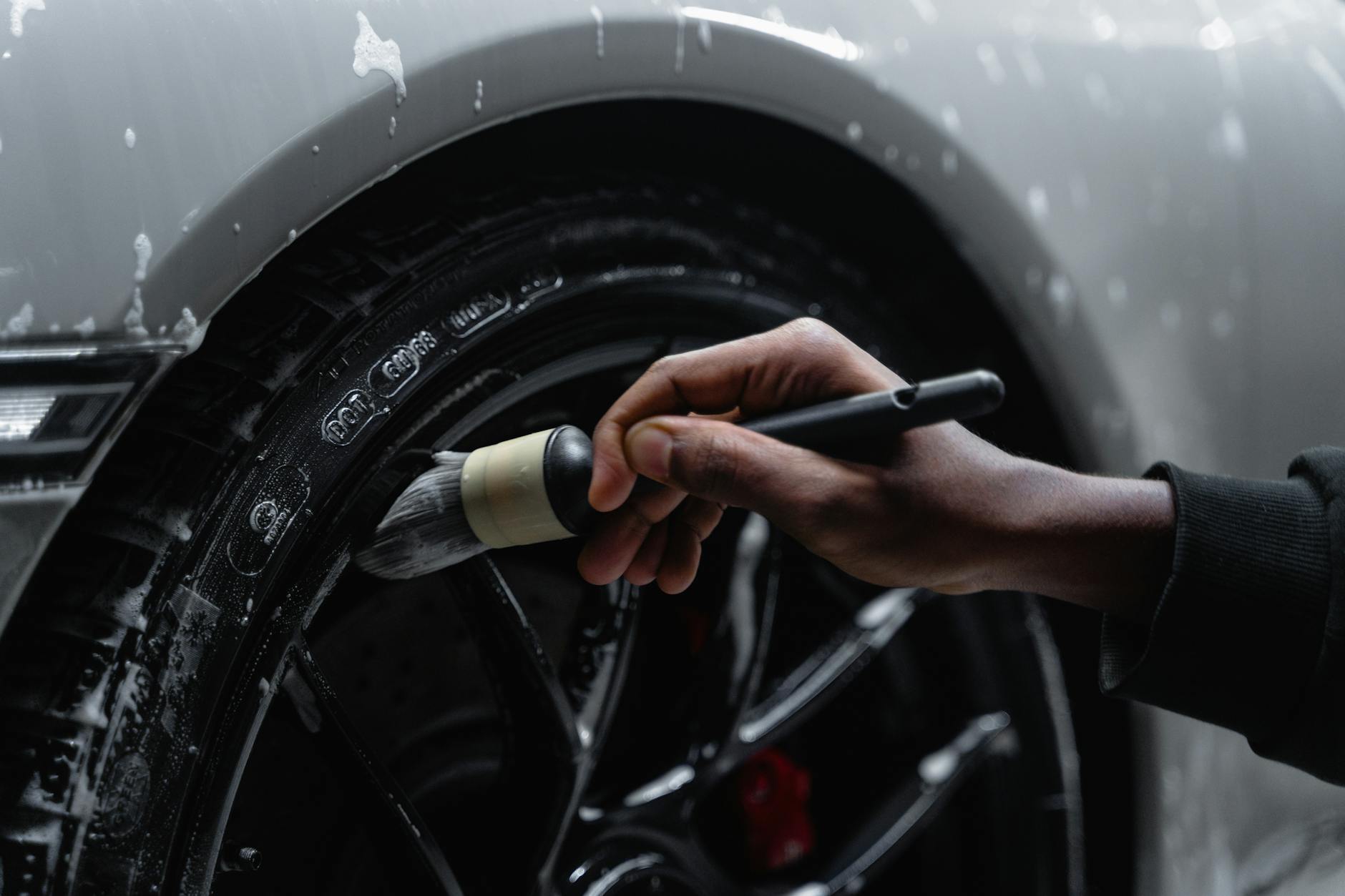 Photo by Tima Miroshnichenko
Photo by Tima Miroshnichenko
Inspecting for Physical Damage
A visual inspection of your tires can reveal issues beyond tread depth. Here’s what to look for:
- Cracks: Tiny fissures in the rubber often indicate aging or exposure to extreme weather. They weaken the tire’s structure over time.
- Bulges: These indicate internal damage caused by impacts like hitting potholes or curbs. A bulge can lead to blowouts and needs immediate attention.
- Cuts or Tears: Any visible cuts or tears in the sidewalls or tread can compromise a tire’s integrity, making it unsafe to drive.
Think of your tires like a balloon: any crack or bulge increases the chance of a sudden, dangerous failure. By closely inspecting all four tires, especially along the sidewalls and treads, you can spot these hazards early and avoid road trouble.
Checking Tire Pressure
Maintaining proper tire pressure isn’t just about saving gas—it’s also critical for tire longevity and safety. Underinflated tires wear out faster, reduce fuel efficiency, and are more prone to blowouts. Overinflated tires, on the other hand, can make your vehicle harder to control. Follow these steps to check tire pressure:
- Get a tire pressure gauge, either digital or analog, from your local auto store.
- Make sure your tires are cold (check pressure before driving or wait at least 3 hours after parking).
- Locate your car’s recommended tire pressure. You’ll typically find this on a sticker inside the driver’s door or in the owner’s manual.
- Unscrew the valve cap on your tire, press the gauge firmly onto the valve, and note the reading.
- Compare this to the recommended pressure. If it’s below the recommended amount, inflate the tire with an air compressor. If it’s over, release air carefully until it matches the recommended PSI.
Make this a monthly habit or check before long road trips. A small effort goes a long way in ensuring your safety and saving money in the long run.
By following these simple steps, you can detect potential tire problems at home and address them before they escalate.
Professional Tire Inspections and Maintenance
Ensuring your tires are in top shape goes beyond simply looking at them. Regular professional inspections and maintenance play a critical role in maximizing tire performance, ensuring safety, and extending their lifespan. Here’s what you need to know:
When to Seek Professional Help
 Photo by Gustavo Fring
Photo by Gustavo Fring
There are several situations where professional tire services are not just beneficial but necessary:
- Visible Damage: If you notice cuts, cracks, bulges, or anything unusual on the tire’s surface, it’s time to consult a technician. These issues often indicate internal damage that could lead to blowouts.
- Uneven Wear: Patches of wear or tread that’s lower on one side signal alignment or suspension issues. A professional inspection can identify the root cause and recommend corrective measures.
- Persistent Vibrations: Feeling vibrations while driving can suggest unbalanced tires or alignment issues. If this continues after balancing, it’s essential to have a professional check the tires and suspension.
- Age and Mileage: Tires older than six years or those that have exceeded their recommended mileage (often 50,000 miles) should be inspected by an expert.
- Post-Accident Checks: After a collision or hitting a pothole hard, your tires and wheels may be damaged even if it’s not immediately visible. A professional inspection can uncover hidden issues.
With their tools and expertise, professionals can detect problems that DIY inspections might miss, ensuring your tires remain safe and reliable.
Tire Rotation and Alignment
Tire rotation and wheel alignment are essential for keeping your tires in optimal shape and ensuring a smooth, fuel-efficient ride.
- Tire Rotation: Every tire wears differently based on its position on the car. Regular tire rotation (about every 5,000-7,500 miles) ensures even tread wear, improving overall performance and extending lifespan. For example, front tires often wear faster due to steering and engine weight.
- Wheel Alignment: Proper alignment adjusts your wheel angles, ensuring your car drives straight rather than pulling to one side. Misaligned wheels can reduce fuel efficiency, wear out tires prematurely, and make your vehicle harder to control.
Routine alignment checks every one to two years, or after hitting curbs and potholes, help keep your vehicle stable and your tires from wearing unevenly. By incorporating these practices, you’ll avoid unnecessary tire replacements and save money in the long run.
Recognizing Tire Recalls
Tire recalls occur when manufacturers identify safety-related defects in certain tire models. Here’s how you can check and address potential recalls:
- Check Tire Identification Numbers (TIN): Each tire has a DOT code on its sidewall. The final four digits indicate the manufacturing week and year.
- Search Recall Databases: Use resources like the National Highway Traffic Safety Administration (NHTSA) or the U.S. Tire Manufacturers Association (USTMA) to look up recalls using the TIN or tire model.
- Register Your Tires: Registering your tires with the manufacturer upon purchase ensures you’ll be notified directly about recalls.
- Act Immediately: If your tires are recalled, manufacturers typically provide replacements or repairs at no cost. Take action promptly to avoid safety risks.
Taking the time to monitor recalls and respond quickly can save lives. Think of it as a safety net—a simple step that ensures you’re protected on the road.
Buying Replacement Tires
Making the right decision when it comes to replacing your tires can significantly impact your safety, driving experience, and wallet. Whether you’re experiencing slick handling or preparing for a change in seasons, let’s break down some essential considerations for buying replacement tires.
Choosing the Right Tire Type
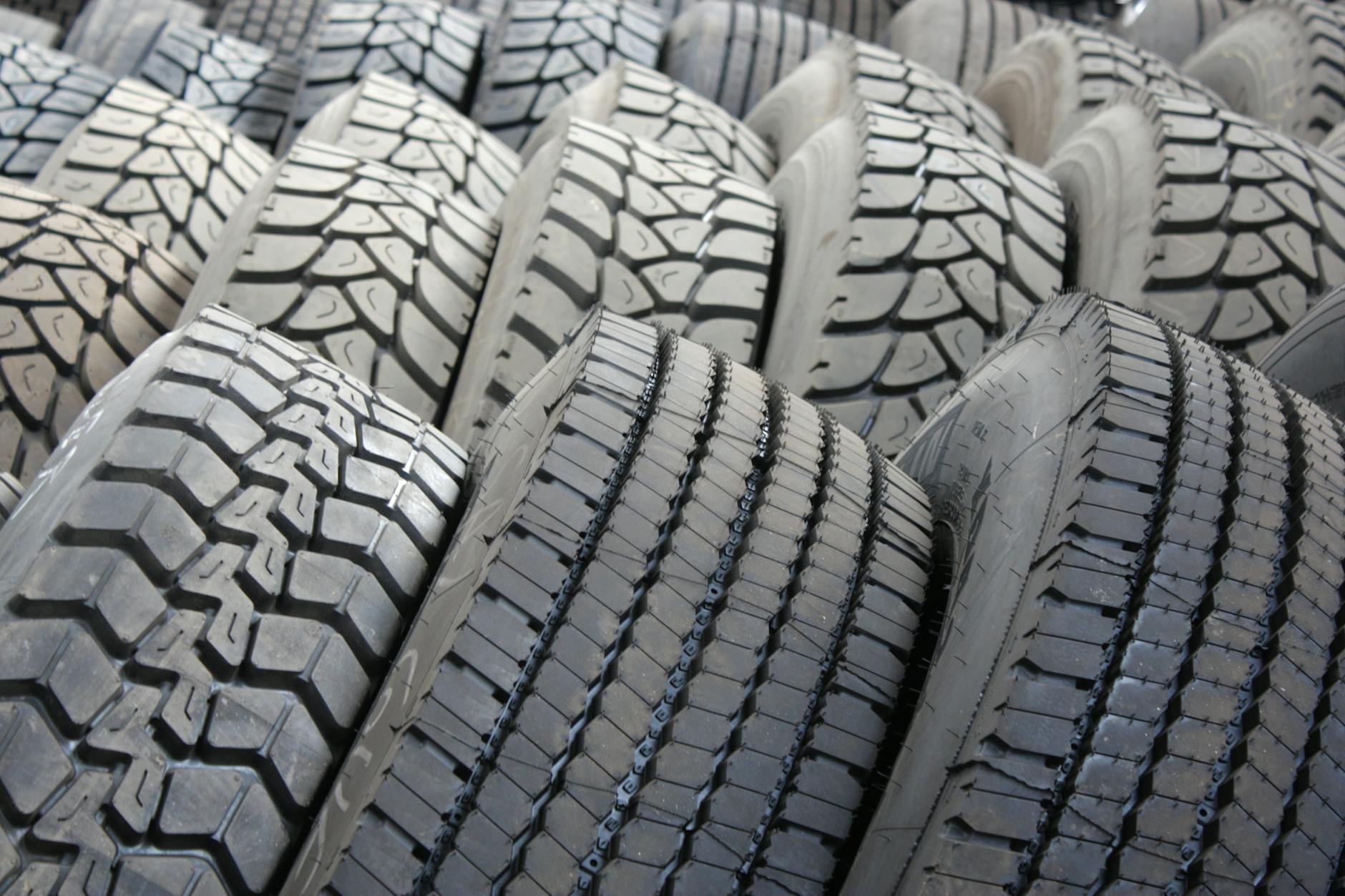 Photo by Javier Balseiro
Photo by Javier Balseiro
Selecting the right tire for your vehicle starts with understanding how different types of tires are designed. The tire you choose depends on your driving habits, the environment you drive in, and the weather conditions you’ll face.
- All-Season Tires: These are the most common tires for daily commuting. They are versatile, providing adequate performance in dry, wet, and light snowy conditions. However, they’re not specialized for extreme winter weather or high-performance driving. Think of these as the “jack-of-all-trades” option.
- Winter Tires: If you live where temperatures regularly drop below 45°F and you face snow or ice, winter tires are your go-to. Their deeper treads and soft rubber compounds provide unmatched grip, but they should only be used during the colder months.
- Performance Tires: Designed for sports cars or higher-speed vehicles, these tires enhance grip and responsiveness in warm weather or on dry pavement. However, they may wear out faster and are not practical for icy or snowy conditions.
- All-Weather Tires: Not to be confused with all-season tires, these hybrid options offer better snow and ice traction than all-seasons while performing decently in warmer conditions. They’re an ideal compromise if you don’t want to switch tires seasonally.
Think of your tire choice as suiting your “road personality.” For instance, imagine you regularly hike—good boots for dry, snowy, or muddy terrains vary. Similarly, tires tailored to specific conditions ensure your vehicle performs as expected no matter the weather.
Understanding Tire Specifications
If you’ve ever noticed the series of numbers and letters on a tire’s sidewall, you may have wondered what it all means. Tire specifications aren’t just random—they’re crucial for ensuring compatibility with your vehicle. Let’s decode an example: P225/70R16 91S.
- P: This stands for “Passenger vehicle.” Other designations include “LT” for light trucks.
- 225: The tire width in millimeters (from sidewall to sidewall).
- 70: The aspect ratio, or height of the tire’s sidewall, as a percentage of its width.
- R: Indicates radial construction, which is the most common type of tire.
- 16: The wheel diameter the tire is designed to fit (in inches).
- 91: The load index, which shows the maximum weight the tire can safely carry.
- S: The speed rating, or the top speed at which the tire can perform safely—like a gear limit for your car.
Understanding these codes isn’t just for enthusiasts—it’s essential knowledge to avoid mismatched tires that could lead to poor handling, reduced fuel efficiency, or even safety risks. Trust your owner’s manual or consult a tire expert to ensure the numbers match your vehicle’s requirements.
New vs. Used Tires
One critical choice when buying replacement tires is deciding between new and used options. While used tires seem tempting because of their lower upfront cost, they come with significant risks worth considering.
Why New Tires Are Worth It:
- Warranty and Assurance: New tires come with manufacturer warranties, giving you peace of mind.
- Optimum Tread Depth: Unlike used tires, new ones have full tread depth for longer-lasting performance and better grip.
- No Hidden Damage: There’s no guessing about the tire’s history, such as whether it’s been punctured or improperly stored.
Risks of Used Tires:
- Unknown History: A used tire might look fine but could be structurally compromised due to repairs or age.
- Limited Lifespan: With less tread and potential wear, used tires won’t last nearly as long as new ones.
- Safety Concerns: Hidden damage could lead to blowouts, especially under high-speed conditions.
The best analogy? Think of buying used tires like buying secondhand shoes: they might fit, but hidden wear-and-tear could fail you when you need them the most. If you’re on a strict budget and considering used options, make sure to inspect their tread depth (at least 4/32″ for safety) and check for visible damage. Ideally, stick with new tires for reliability.
By understanding these key points, you’re well-equipped to find tires that fit your needs, ensuring a safer and smoother driving experience.
Extending the Life of Your Tires
Your tires do more than keep your car connected to the road—they influence fuel efficiency, safety, and driving comfort. Yet, many drivers overlook simple steps that can help tires last longer. By adopting regular maintenance habits, adjusting driving behavior, and properly storing your tires, you can save money and enhance your vehicle’s performance.
Regular Maintenance Practices
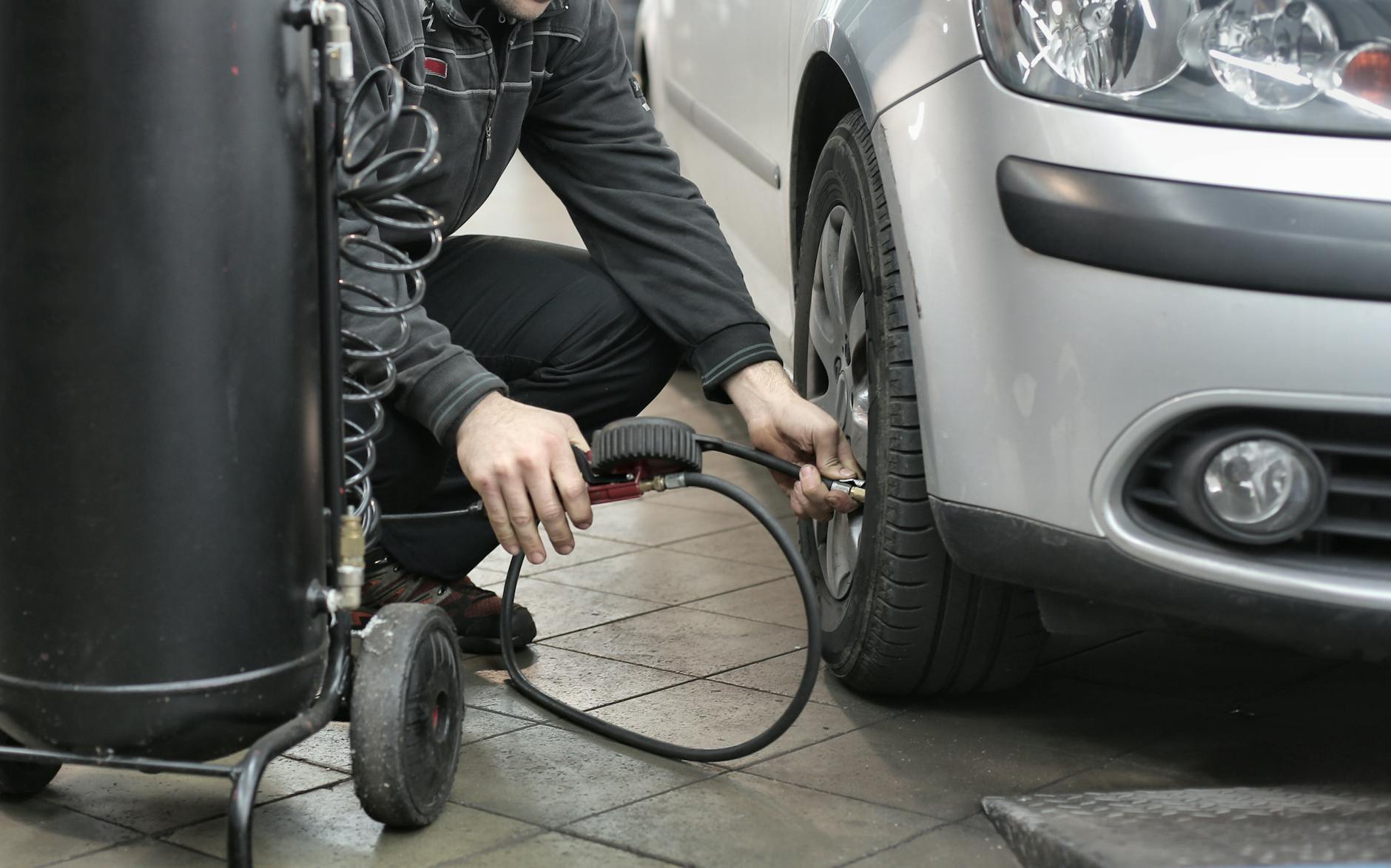 Photo by Andrea Piacquadio
Photo by Andrea Piacquadio
Keeping your tires in top condition starts with regular maintenance. These small, consistent efforts can make a big difference:
- Check Tire Pressure Monthly: Underinflated tires wear out faster, decrease fuel efficiency, and increase the risk of blowouts. Overinflated ones can make for a bumpy ride and uneven wear. Use a quality pressure gauge and adjust to the manufacturer-recommended psi, which you’ll usually find in your owner’s manual or door jamb. Always check tires when cold for the most accurate reading.
- Inspect for Damage: Look for cracks, bulges, embedded objects, or uneven tread wear. Spotting problems early can prevent bigger issues like blowouts.
- Clean Your Tires: Dirt, debris, and chemicals can degrade rubber over time. Regularly clean your tires with soap and water, especially if you frequently drive on salted or gravel roads.
By keeping tire pressure in check and inspecting for damage, you’re not just preserving your tires—you’re prioritizing road safety.
Driving Habits
Your driving style has a huge impact on how fast your tires wear out. Think of your tires like the soles of shoes: the harder and faster you use them, the quicker they’ll wear down. Adjusting these habits can extend your tire’s lifespan:
- Avoid Sudden Starts and Stops: Harsh braking or fast takeoffs cause unnecessary friction and heat, accelerating tire wear.
- Take Corners Smoothly: Speeds and sharp turns put extra strain on the edges of your tires.
- Stay Alert for Potholes and Obstacles: Hitting curbs or potholes not only damages your suspension but also weakens the tire structure. A little caution saves you from costly repairs.
- Don’t Overload the Vehicle: Check your car’s weight limits—overloading puts stress on tires, leading to faster degradation or catastrophic failure.
By driving smoothly and treating your tires with care, you’re doing more than extending their life—you’re ensuring a safer, more fuel-efficient ride.
Storing Spare Tires Properly
If you use seasonal tires or have a spare, proper storage is essential to prevent premature wear. Tires degrade over time, even when they aren’t on your vehicle. Here are some tips to store them correctly:
- Clean Before Storing: Wash your tires to remove dirt and chemicals, then let them dry completely to prevent moisture damage and mildew growth.
- Store in a Cool, Dry Place: Tires should be kept away from direct sunlight, excessive heat, and ozone sources (like generators or compressors). A climate-controlled garage or basement is ideal.
- Bag Your Tires: Use large plastic bags or tire totes to block exposure to air and humidity. Remove as much air as possible before sealing.
- Stack or Stand?: If storing tires without rims, stand them upright to reduce deformation risk. If they’re mounted on rims, it’s okay to stack them flat.
Proper storage ensures your tires are ready for action when you need them. Skimping on storage care is like leaving milk unrefrigerated—it shortens its usable life unnecessarily.
By following these tips, you’ll not only extend your tire’s usability but also make the most of your investment. Whether they’re in use or in storage, a little care goes a long way in keeping your tires road-ready.
Conclusion
Your tires are the foundation of your vehicle’s safety and performance. Recognizing signs like low tread depth, uneven wear, or sidewall damage helps prevent accidents and costly repairs. Relying on visual checks and professional inspections ensures you address issues before they escalate.
Don’t wait until problems become unavoidable. Perform regular tire checks, stick to maintenance schedules, and consult a trusted expert when in doubt. Prioritize your safety on the road—your peace of mind depends on it.


